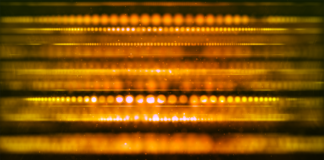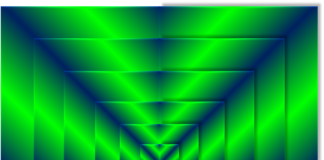Face detection is at the forefront of artificial intelligence advancements, serving as a critical technology in various domains. Face detection, the process of identifying and locating human faces within images or videos, has seen remarkable improvements with the integration of AI. The applications of face detection span security, entertainment, healthcare, and beyond, making it one of the most transformative AI technologies in use today. Here are 10 game-changing facts about AI in face detection that underline its importance and potential.
1. The Evolution of Face Detection
Face detection technology began with basic image processing techniques, relying on manually crafted algorithms to detect facial features. The advent of AI and deep learning has completely transformed this field. Modern face detection systems leverage convolutional neural networks (CNNs) to analyze images and identify faces with unmatched accuracy and speed. These advancements enable systems to detect faces under challenging conditions, such as varying lighting, angles, and occlusions.
2. Deep Learning Models in Face Detection
AI-powered face detection employs deep learning models like Faster R-CNN, YOLO (You Only Look Once), and SSD (Single Shot MultiBox Detector). These models process vast amounts of data to learn complex patterns, making them highly effective in identifying faces in real-time scenarios. The integration of AI ensures that face detection systems are robust and adaptable to diverse applications.
3. Applications in Security and Surveillance
Face detection is a cornerstone of modern security systems. AI-powered face detection is used in video surveillance to monitor large areas, detect unauthorized access, and enhance public safety. Coupled with facial recognition technology, it can identify individuals in real-time, aiding law enforcement and border security operations.
4. Role in Healthcare
In healthcare, face detection is enabling innovative solutions for patient monitoring and diagnosis. AI-driven systems can analyze facial expressions to detect pain, stress, or mood changes. Additionally, face detection is being used in telemedicine to enhance virtual consultations, ensuring accurate assessment of patient conditions.
5. Personalized User Experiences
Face detection technology is revolutionizing user experiences by enabling personalization. Smartphones and devices use face detection for secure access through facial authentication. Social media platforms employ it for features like auto-tagging, while retail applications use it to analyze customer demographics and preferences.
6. Facial Expression Analysis
Beyond detecting faces, AI systems are capable of analyzing facial expressions to interpret emotions and intentions. This capability has applications in customer service, gaming, and mental health assessment. AI-driven facial expression analysis allows for real-time insights into user behavior and engagement.
7. Real-Time Processing
Advancements in AI have enabled face detection systems to process data in real time. This capability is critical in applications such as autonomous vehicles, augmented reality (AR), and live event monitoring. Real-time face detection ensures rapid decision-making and seamless user experiences.
8. Ethical Considerations and Privacy
The widespread use of face detection technology raises ethical concerns, particularly regarding privacy and data security. Misuse of facial data can lead to unauthorized surveillance and identity theft. Developers and policymakers must work together to establish regulations that ensure ethical use and protect individual privacy rights.
9. Face Detection in Entertainment
The entertainment industry has embraced face detection technology for various applications, including motion capture, virtual reality (VR), and special effects. AI-driven systems accurately track facial movements, enabling the creation of lifelike digital characters and immersive experiences.
10. Future Innovations
The future of face detection is promising, with advancements in AI poised to enhance its capabilities further. Emerging trends include 3D face detection, which adds depth perception for more accurate recognition, and lightweight models optimized for edge devices. These innovations will expand the reach of face detection technology to new domains.
11. Integration with IoT
Face detection technology is increasingly integrated with the Internet of Things (IoT) to create smart ecosystems. For instance, smart home devices use face detection to identify residents and customize settings, while connected cars employ it for driver monitoring and safety.
12. Cross-Cultural and Demographic Adaptability
AI-powered face detection systems are being trained to recognize faces across different cultures and demographics. This adaptability is crucial for applications like international security and globalized consumer platforms, ensuring accurate detection regardless of geographic or ethnic diversity.
13. Role in Marketing and Advertising
Marketers are leveraging face detection to analyze audience reactions and optimize campaigns. AI systems can detect emotions and engagement levels during advertisements, providing valuable insights for creating targeted and effective marketing strategies.
14. Educational Applications
In education, face detection is transforming how teachers and institutions interact with students. AI systems can monitor student attentiveness during online classes, ensuring engagement and identifying areas where additional support may be needed. This technology is particularly impactful in remote and hybrid learning environments.
15. Enhancing Gaming Experiences
Face detection has made significant inroads into the gaming industry, where it is used to create interactive and immersive experiences. AI systems can analyze players’ facial expressions in real time, allowing for adaptive gameplay that responds to their emotions and reactions.
16. Improving Accessibility
Face detection technology is enhancing accessibility for individuals with disabilities. AI systems can interpret facial gestures as commands, enabling hands-free control of devices. This innovation fosters independence and inclusivity, empowering users to interact with technology on their terms.
17. Open-Source Contributions
The open-source community has played a pivotal role in advancing face detection technology. Frameworks like OpenCV and Dlib provide developers with powerful tools to build and experiment with AI-powered face detection systems. These contributions accelerate innovation and democratize access to cutting-edge technology.
18. Challenges in Adverse Conditions
AI face detection systems face challenges in handling adverse conditions such as low light, motion blur, and occlusions. Researchers are developing advanced models and training techniques to overcome these limitations, ensuring reliable performance across diverse environments.
19. Facial Biometrics for Secure Transactions
Facial biometrics powered by AI are being used to secure financial transactions and sensitive data access. By analyzing unique facial features, these systems provide an additional layer of security, reducing the risk of fraud and unauthorized access.
20. Empowering the Future of Technology
Face detection is not just a technological milestone; it is a gateway to innovation. As AI continues to evolve, face detection will play an integral role in shaping the future of human-computer interaction. From enhancing security to creating personalized experiences, its potential is boundless.
Conclusion
AI in face detection is revolutionizing industries and redefining the way we interact with technology. By understanding these 10 game-changing facts, we can appreciate the transformative impact of this technology and its potential to shape a smarter and more connected world. As advancements continue, face detection will remain a cornerstone of innovation, driving progress across domains.














